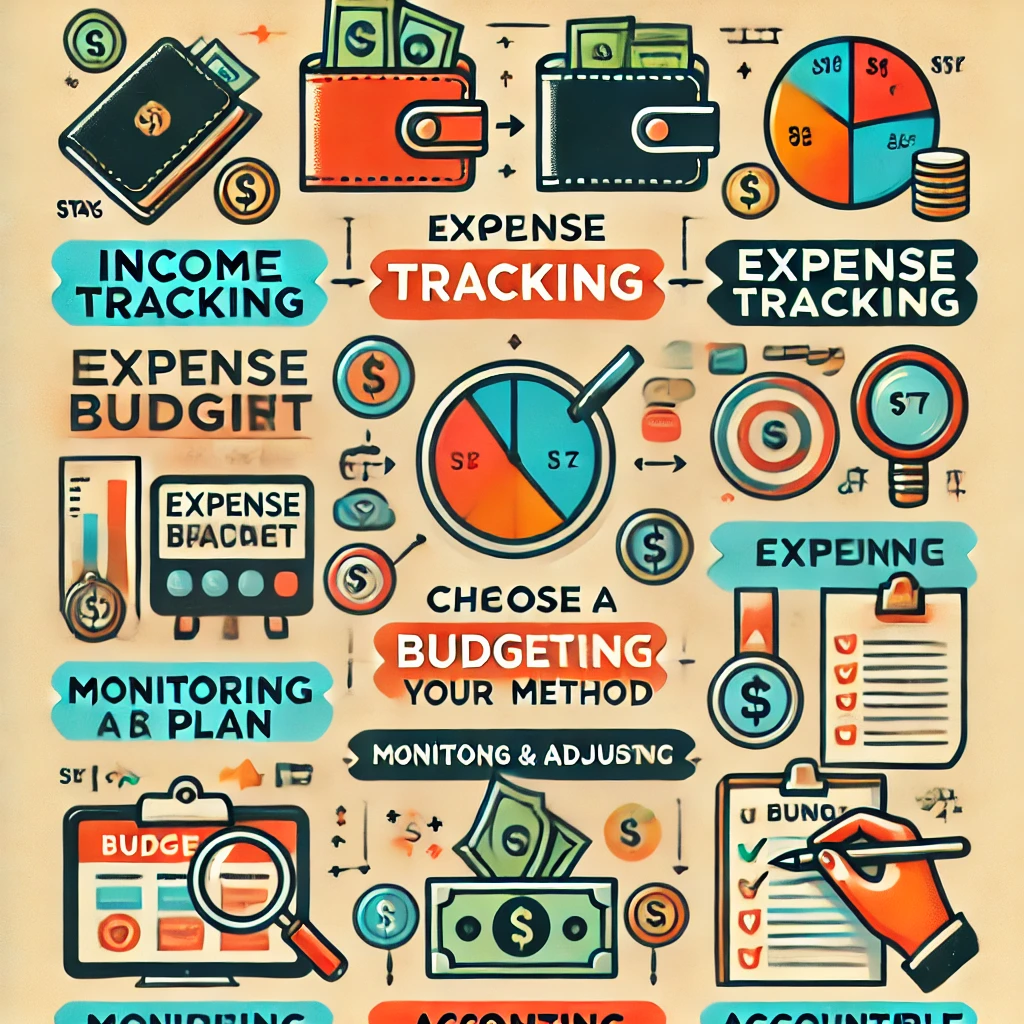Managing your finances effectively starts with a well-structured personal budget. A budget serves as a roadmap, helping you allocate your income towards essential expenses, savings, and discretionary spending. By creating and sticking to a personal budget, you can achieve financial stability, avoid debt, and work toward your financial goals. Here’s a step-by-step guide to help you create your own budget.
Step 1: Assess Your Income
The first step in creating a budget is understanding how much money you have coming in.
Actions:
- List all sources of income, including your salary, freelance work, rental income, or any other earnings.
- Use your net income (after taxes and deductions) to ensure accuracy.
Example: If you earn ₹50,000 per month after taxes and deductions, this amount becomes the foundation of your budget.
Step 2: Track Your Expenses
Before you can allocate your money, you need to understand where it’s currently going.
Actions:
- Categorize Your Spending:
Divide your expenses into fixed (e.g., rent, utilities) and variable (e.g., dining out, entertainment). - Use Tools:
- Mobile apps like Mint or YNAB (You Need A Budget).
- Simple spreadsheets or notebooks.
- Analyze Trends:
Look back at the past three months of expenses to identify spending habits.
Example: If you spend ₹15,000 on rent, ₹5,000 on utilities, and ₹10,000 on groceries, these are your fixed expenses.
Step 3: Set Financial Goals
A budget without goals lacks purpose. Decide what you want to achieve financially.
Types of Goals:
- Short-Term: Pay off credit card debt, save for a vacation, or build an emergency fund.
- Long-Term: Save for retirement, a down payment on a house, or a child’s education.
SMART Goals:
Ensure your goals are Specific, Measurable, Achievable, Relevant, and Time-bound.
Example: “Save ₹5,000 monthly to build a ₹60,000 emergency fund in one year.”
Step 4: Choose a Budgeting Method
There are several budgeting methods to choose from, based on your needs and preferences.
Popular Methods:
- 50/30/20 Rule:
- 50% for necessities (rent, groceries).
- 30% for wants (entertainment, dining out).
- 20% for savings and debt repayment.
- Zero-Based Budget:
- Assign every rupee a job until your income minus expenses equals zero.
- Envelope System:
- Use physical or digital envelopes for different spending categories.
Example: If you earn ₹50,000 monthly, under the 50/30/20 rule:
- ₹25,000 for necessities.
- ₹15,000 for wants.
- ₹10,000 for savings.
Step 5: Create Your Budget Plan
Using the information you’ve gathered, draft your budget.
Actions:
- Allocate Funds to Each Category:
Use your chosen budgeting method to divide your income. - Set Limits for Variable Expenses:
Based on past spending trends, set realistic limits. - Include a Buffer:
Set aside a small percentage (e.g., 5%) for unexpected expenses.
Step 6: Monitor and Adjust Your Budget
A budget isn’t set in stone—it needs regular review and adjustments.
Actions:
- Weekly Check-Ins: Review your spending to ensure you’re on track.
- Monthly Reviews: Adjust your budget based on changes in income or expenses.
- Use Technology: Apps can send notifications when you exceed spending limits.
Example: If you spent more on utilities due to seasonal changes, adjust the budget to compensate in other areas.
Step 7: Stay Accountable
Sticking to a budget requires discipline and accountability.
Tips:
- Share your financial goals with a trusted friend or family member for encouragement.
- Celebrate small wins, like saving your first ₹10,000.
- Avoid impulse purchases by implementing a 24-hour rule for discretionary spending.
Step 8: Build an Emergency Fund
An emergency fund is a critical part of your financial safety net.
How to Start:
- Set aside a small portion of your income each month.
- Aim for 3-6 months’ worth of living expenses.
Example: If your monthly expenses are ₹30,000, your emergency fund goal should be ₹90,000 to ₹1,80,000.
Benefits of Budgeting
- Financial Clarity: Understand where your money goes.
- Improved Savings: Allocate funds for long-term goals.
- Reduced Stress: Gain control over your finances.
Conclusion
Creating a personal budget is one of the most effective steps toward financial independence. By following this step-by-step guide, you can manage your income, control your expenses, and achieve your financial goals. Remember, a budget isn’t about restricting your spending—it’s about empowering you to make informed financial decisions.
Start small, stay consistent, and watch your financial health improve over time. Happy budgeting!
For more information on various other types of investments please click here
Open your Demat Account now and start Investing – Click Here


